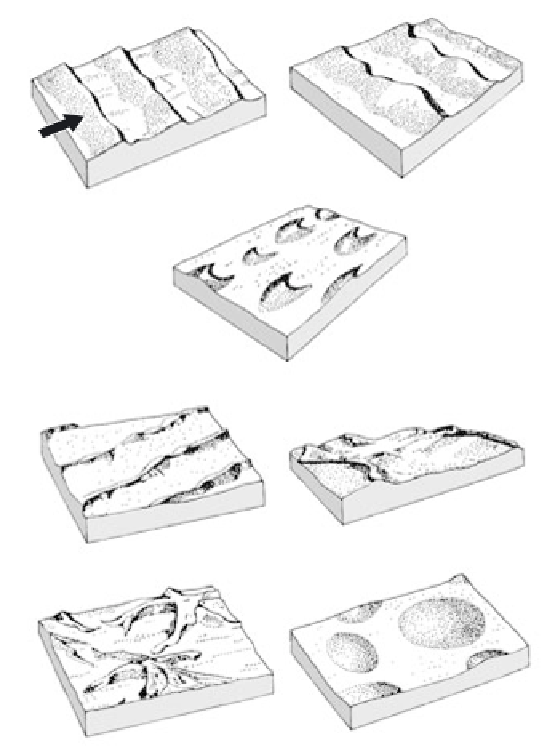Geoscience Reference
In-Depth Information
(b)
Barchanoid ridge
(a)
Transverse ridge
(c)
Barchan
(e)
Reversing
(d)
Linear
Fig. 5.13
Morphology of the main free, simple dunes
described in Table 5.2. (Adapted from McKee 1979.)
(g)
Dome
(f)
Star
Table 5.3
Impeded, simple dunes. For an illustration of
morphology see Fig. 5.14.
Dunes may occur as 'simple' dunes (where the
individual dunes create discrete forms), com-
pound dunes (where simple dunes of the same
type coalesce and merge) or complex dunes
(where different simple dunes merge). Here the
focus is on simple dunes, which, for the sake
of simplicity, can be further subdivided into free
dunes (Table 5.2 and Fig. 5.13), with a form
dictated primarily by wind characteristics, and
impeded dunes (Table 5.3 and Fig. 5.14), a form
that is significantly affected by surface rough-
ness or topographic barriers.
Dune type
Major control on form
Blowout
Disrupted vegetation
Parabolic
Vegetation anchoring
Lunette
Shrub-coppice (Nebkha)
Lee /fore dune
Topographic barrier
Climbing /falling dune
Echo dune
nature of this relationship is illustrated in Fig.
5.15, which plots wind direction variability
(wind regime) against equivalent sand thickness
(sand availability). Wind direction variability
is measured by calculating the frequency and
strength of winds blowing from different direc-
tions. A high value indicates a single predominant
5.3.4.1 Free dunes
Free (or mobile) dunes are controlled primarily
by wind regime and sediment supply. Without
available sediment or without wind to move
available sediment, dunes cannot form. The
















